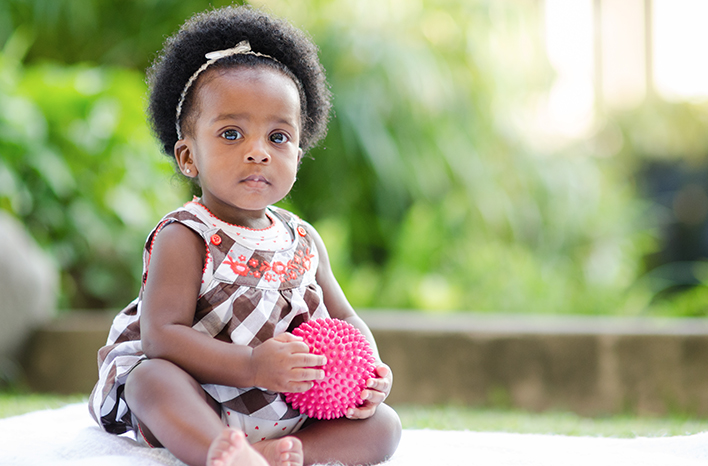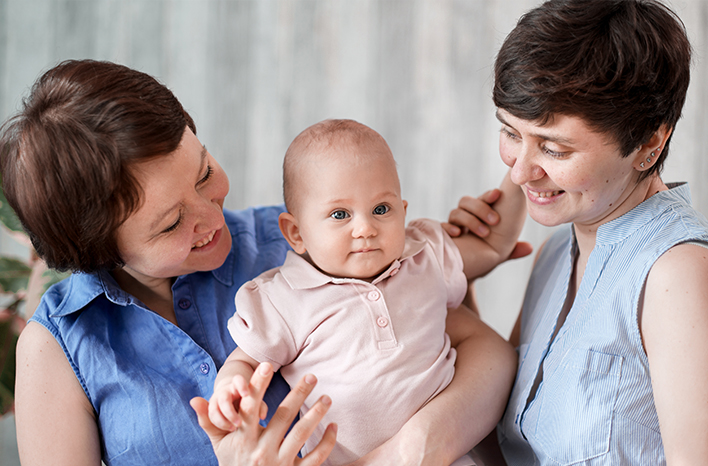Adoption Statistics
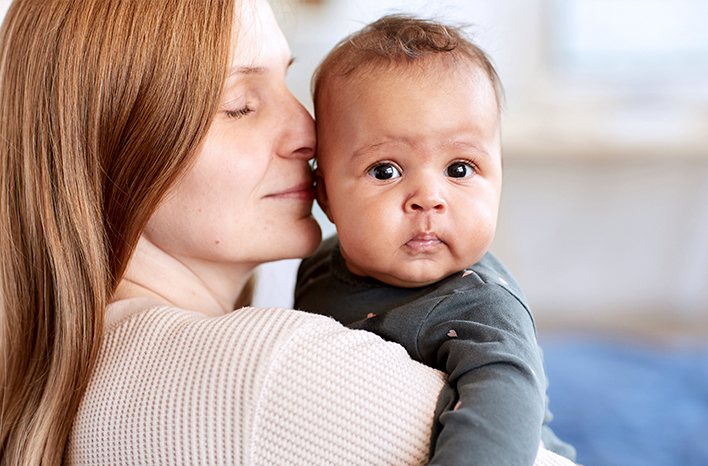
Adoption Statistics & Facts in the U.S.
LifeLong Adoptions strives to provide accurate & up-to-date statistics so you can make an informed choice that can impact your adoption journey. Below you’ll find the most current numbers on adoption rates, children waiting for families, and facts that dispel common myths. Our goal is to provide prospective adoptive parents with a clear and truthful picture of adoption in America today.
Adoption Rates in the U.S.
- 1 in 35 children in the United States is adopted
- More than 50,000 children are adopted through foster care every year
- An estimated 100,000 children are adopted through all adoption types every year
- More than 1.2 million children are living with at least one adoptive parent
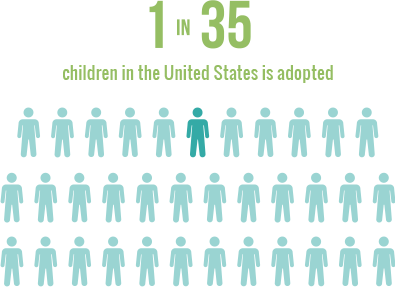
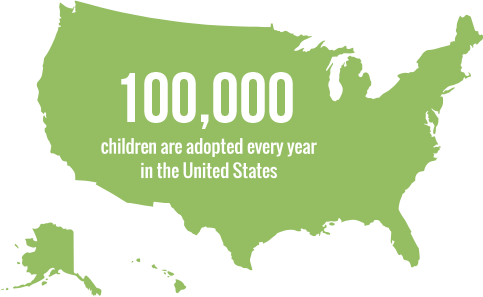
Considering Adoption? Let Us Help Grow Your Family
For many hopeful parents, adopting a baby isn’t only about growing a family, it’s about providing a safe, stable, and loving home for a child. At LifeLong Adoptions, we offer support, resources, and personalized services tailored to hopeful parents like you as they navigate the adoption process. Our compassionate coordinators have decades of experience, as well as an extensive, nationwide network that connects prospective parents with expectant mothers. Learn how we can help fulfill your dreams of starting a family.
Adoption Types in the United States
-
Private Domestic Adoption: 31.64%
Adoption through private providers like adoption agencies, adoption attorneys, adoption facilitators, and other adoption professionals
-
Foster Care Adoption: 66.48%
Adoption through the Child Welfare System
-
International Adoption: 1.88%
Adoption through agencies and other providers in countries around the world
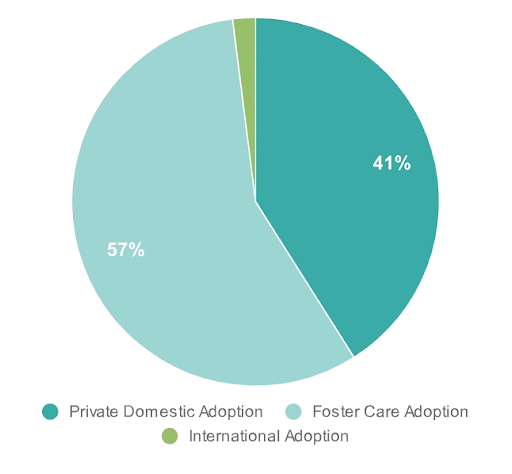
Adoptions in the United States fall into three broad categories: private domestic (infant), foster care, and international (inter‑country).
- Private domestic adoptions account for the majority of infant placements.
- Foster care adoptions involve children whose parental rights have been terminated; many are older or part of sibling groups.
- International adoptions have declined sharply over the past 20 years.
About Adopted Children
The following are general statistics representative of all adopted children in the United States.
Gender
- Male: 49%
- Female: 51%
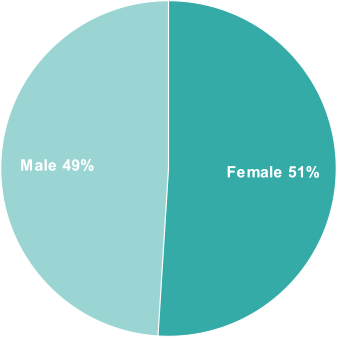
Race/Ethnic Origin
- White: 37%
- Black: 23%
- Hispanic: 15%
- Asian: 15%
- Other: 10%
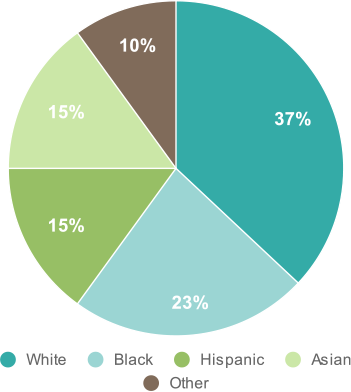
Age
- Age 0-2: 5%
- Age 3-4: 9%
- Age 5-9: 30%
- Age 10-12: 19%
- Age 13-14: 14%
- Age 15-17: 23%
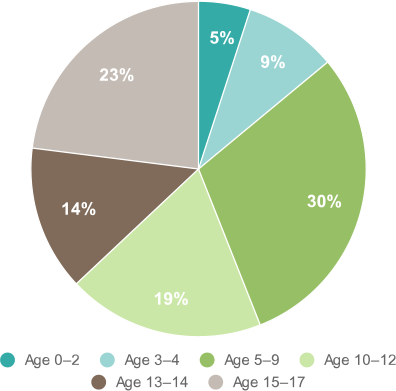
About Adoptive Parents
- Age 0-2: 5%
- Age 3-4: 9%
- Age 5-9: 30%
- Age 10-12: 19%
- Age 13-14: 14%
- Age 15-17: 23%

About Adoptive Parents
The following are general statistics representative of all adoptive families in the United States.
Average Age
- 44 years old
Median Household Income
- $73,378 per year
Educational Level
- Less than high school: 9%
- High school graduate: 20%
- Some college: 32%
- Bachelor’s degree: 22%
- Graduate or professional school degree: 17%
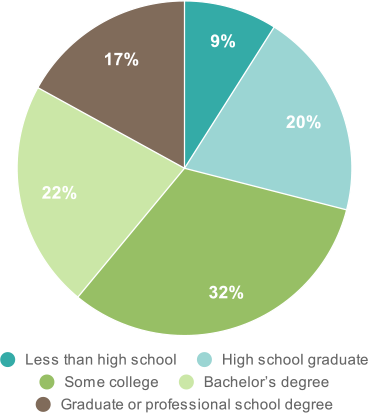
Reasons for Adopting a Baby
- To provide a permanent home for a child: 81%
- A desire to expand family: 69%
- Inability to have a biological child: 52%
- Wanted sibling for another child: 24%
- Had previously adopted the child’s siblings: 7%
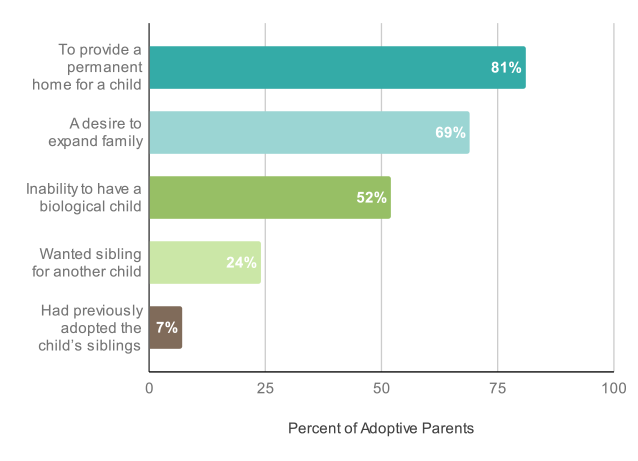
Cost Of Adoption For Prospective Parents
The cost of adoption can vary for hopeful parents based on a number of factors, including adoption service provider and agency costs, financial support, court and legal fees, and more. At LifeLong Adoptions, we offer a detailed breakdown and explanation of what prospective parents can plan for.
Adoption Satisfaction
Of all families who adopted via private domestic adoption, 87% would definitely make the same decision to adopt again. To put this another way, most adoptive parents report satisfying and rewarding experiences with going through domestic adoption service providers like LifeLong Adoptions.
Adoption Facts About Private Domestic Adoption
The following are general statistics representative of private domestic adoption in the United States.
Gender of Adopted Child
- Male: 51%
- Female: 49%
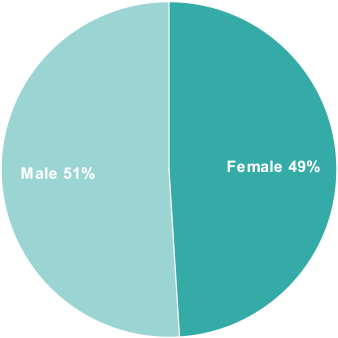
Race/Ethnicity of Adopted Child
- White: 50%
- Black: 25%
- Hispanic: 13%
- Asian: 4%
- Other: 8%
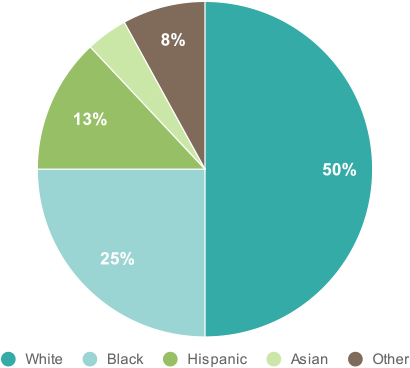
Age at Placement
Of children adopted privately, 62% were placed with their adoptive family as a newborn or when they were less than one month old.
Transracial Adoptions
Transracial adoptions are where the parent(s) and adopted child are of a different race or ethnicity. Of all domestic adoptions in the United States, nearly 30% are transracial adoptions. For more information on this type of adoption, explore our detailed guide.
Open Adoptions
The latest adoption statistics in the US suggest that an overwhelming majority of all domestic adoptions are open adoptions. According to the latest research, 95% of domestic infant adoptions have some level of openness.
- Adopted children with a pre-adoption agreement regarding openness: 67%
- Adopted children with post-adoption contact with birth family: 68%
Adoptive Parents’ Reasons for Adopting a Baby
- To provide a permanent home for a child: 70%
- A desire to expand family: 60%
- Inability to have a biological child/Infertility: 52%
- Wanted sibling for another child: 16%
- Had previously adopted the child’s siblings: 7%
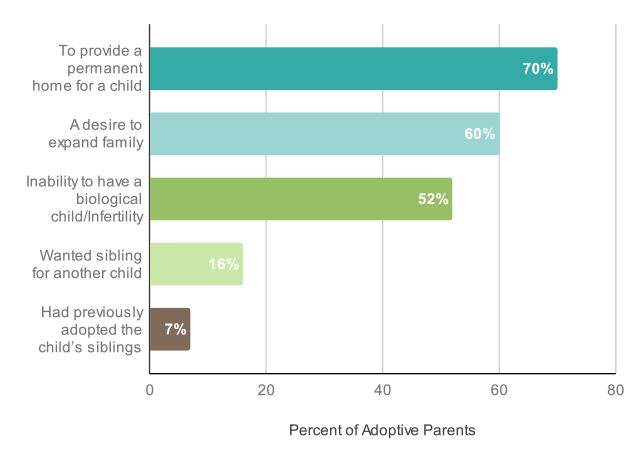
Siblings of Adopted Children
- Adopted child is only child: 24%
- Child has adopted siblings only: 22%
- Child has siblings born to parent and no adopted siblings: 33%
- Child has adopted siblings and siblings born to parent: 21%
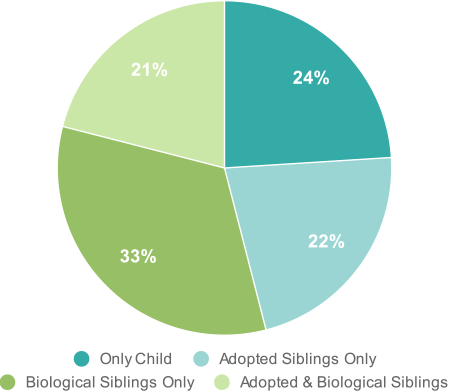
Adoption Satisfaction
93% of parents who adopted domestically would adopt again
Experience The Beauty Of Parenthood Through Domestic Infant Adoption
Whether you’re a first-time hopeful parent or already have adopted and are considering adopting multiples, our compassionate and caring coordinators can help guide you on your journey. With our proven track record of success and commitment to helping adoptive families of all sizes and types, we offer a unique experience that puts parents like you first.
Sources:
U.S. Department of Health and Human Services, Administration for Children and Families. “Adoption and Foster Care Analysis and Reporting System (AFCARS) FY2020 data.” The Administration for Children and Families, 19 November 2021.
U.S. Department of Health and Human Services, Administration for Children & Families. “National Survey of Adoptive Parents (NSAP) | ASPE.” HHS ASPE, 2008.
U.S. Department of Health and Human Services, Administration for Children & Families. “Trends in Foster Care & Adoption: FY 2011- 2020.” The Administration for Children and Families, 30 November 2021.
Crouse, Gilbert, et al. “Foster Care Entry Rates Grew Faster for Infants than for Children of Other Ages, 2011-2018.” HHS ASPE, 17 August 2021.
Taylor, Danielle. “Fifteen Percent of Same-Sex Couples Have Children in Their Household.” U.S. Census Bureau, 17 September 2020.
Anderson, Lydia, et al. “Living Arrangements of Children: 2019.” Census Bureau, February 2022.
Lofquist, Daphne A. and Rose M. “Adopted Children and Stepchildren: 2010.” U.S. Census Bureau, Population Characteristics, Washington, DC, 2014, P20-572.
U.S. Department of State. “2020 Annual Report on Intercountry Adoption.” Travel.State.Gov, July 2021.
Gates, G. “LGBT Parenting in the United States.” Williams Institute, UCLA School of Law, 2013.
Encyclopedia of Britannica. “Adoption of Children Act. Massachusets, United States [1851].”Adoption-Kinship, August 9, 2024.
Koh, Eun, PhD, Hanlon, Ryan, PhD, Daughtery, Laura, PhD, and Lindner, Abigail. “Adoption By The Numbers 2019 - 2020.”National Council for Adoption, December 2022.
Blassingame, Haili. “The Journey of Transracial Adoption.”NPR Illinois, January 24, 2023.
Creating a Family. “Open Adoption.”Creatingafamily.org.
The information on this page is for educational use only and should not be used as a substitute for professional legal advice. Although we make every effort to update this information frequently, information of this kind does change quickly; therefore, some information may be out-of-date and/or contain inaccuracies, omissions, or typographical errors.
Last updated: October 2024

